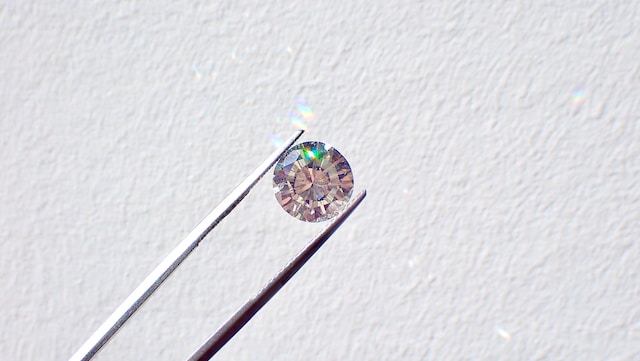Real Estate Agent Oakland is client-focused and values clear communication. They can direct clients to other professionals, such as inspectors and lenders, to help in the home buying process.
They may also provide market research reports, attend conventions, seminars and staff and association meetings to stay current with the real estate industry. They must maintain a valid real estate license and pay annual membership dues.

Your real estate agent’s job is to help you navigate the complicated process of buying or selling a home. A good agent will have a firm grasp of your goals, listen to your concerns and answer your questions in a timely manner. Ask friends, family and coworkers for recommendations. Also, check out agents’ websites to find out more about their qualifications and experience. Real estate agents typically specialize in residential or commercial properties, and some have earned specialized credentials or completed educational programs.
If you’re buying a home, look for an agent who understands your specific needs and can identify homes that align with your budget, lifestyle preferences and desired location. An agent should be able to explain current market trends and provide you with information on how much similar homes in your area have sold for recently. They can also show you properties on the MLS that aren’t yet listed but may soon be, saving you time by eliminating homes that don’t meet your criteria.
In the case of selling a home, an agent will work with you to stage and photograph your property to appeal to buyers. They can also assist you in preparing your home for sale and recommend professionals to handle repairs or cosmetic upgrades. They’ll promote your listing on the MLS and other real estate sites, host open houses and schedule private showings for potential buyers.
Real estate transactions often include a lot of paperwork. Your agent will ensure that all required documents are filled out correctly and submitted on time. They’ll also guide you through the closing process and ensure that any outstanding issues are addressed. As members of the National Association of Realtors, agents must maintain a valid real estate license and complete continuing education courses and ethics training. They’re also bound by the NAR’s Code of Ethics, which is intended to protect consumers.
Negotiating on Your Behalf
Real estate agents negotiate on behalf of their clients to get the best deals possible. The best agents know how to read a negotiation situation and are skilled at putting themselves in their client’s shoes. They also use their knowledge of the local market and pricing trends to negotiate effectively.
During negotiations, it’s important for an agent to remain calm and not let emotions get in the way of the deal. This is especially true in high-stress situations, such as when a client is buying or selling a home. Getting emotional may make you less able to understand the other party’s position and cause a deal to break down.
If a client is nervous during negotiations, an agent can help them relax and focus on the objective of getting a good deal for their client. An agent can also provide advice on the best approach for their situation and suggest ways to compromise. For example, in a situation where a seller won’t budge on price, an agent can help their client focus on something they do have control over, such as getting closing costs covered or being able to move in right away.
An agent can also help their client come prepared for negotiations by ensuring they are pre-approved for financing and have earnest money ready. Having these factors in place can demonstrate to sellers and listing agents that the buyer is serious about the purchase and reduces the likelihood of a sale falling through. In addition, an agent can offer advice on how to use contingencies in a contract to influence the terms of a transaction without impacting the property’s price. This is important, as it ensures that both parties are happy with the outcome of the negotiations.
Finding a Home or Property
A real estate agent can help you find a home or property that matches your needs, budget and lifestyle. They can also help you with the financing, legal aspects and tax implications of a real estate transaction. They can also recommend local professionals like inspectors, contractors, movers and lenders.
Real estate agents can help you find homes and properties by searching the Multiple Listing Service (MLS) database on your behalf. They can also look for unlisted properties that might be coming on the market soon. Real estate agents also have knowledge of the area, including school districts, neighborhoods and nearby amenities.
For home buyers, a real estate agent can help you navigate the buying process by providing information about neighborhoods, home prices and local mortgage rates. They can also assist you with finding home tours and open houses. They can also negotiate on your behalf to get the best price for a property. They can also provide guidance and support throughout the closing process.
When you’re looking for a real estate agent, ask friends and family for referrals or do some online research. Consider their experience, workload, specialties and commission rate. It’s also important to interview several candidates to determine which one is the best fit for you.
Some real estate agents work for both home sellers and buyers, but they usually only represent one side of the transaction at a time. If an agent says they can represent you as a buyer and seller, request a written statement that discloses their dual agency relationship.
Helping You Get Preapproved for a Mortgage
Many real estate agents require their buyers to get preapproved for a mortgage before beginning the house-hunting process. This step is important because it shows the realtor that the buyer is serious about buying a home and gives them an idea of what price range they can afford to buy in. It also helps reduce the risk of the loan falling through at closing because the lender knows that the buyer has a solid lending history and is creditworthy.
In addition, a good real estate agent can help their clients shop around for mortgage lenders and offer advice on the most competitive rates available. The realtor may also have trusted lender referrals they use regularly, which can streamline the loan approval process and eliminate some of the guesswork when it comes to choosing a mortgage lender.
When interviewing potential real estate agents, it’s important to ask about their experience and specialty. For example, if you’re looking for a green property, it’s helpful to work with an agent who has extensive knowledge of green building practices and can connect you with environmentally friendly builders. In addition, it’s important to find an agent who’s reliable and easy to communicate with. A home purchase is likely to be one of the largest investments you’ll ever make, so you want to ensure that your agent has your best interests in mind.
Lastly, be sure to check the real estate agent’s credentials with your state’s real estate licensing board. This will allow you to verify their license status and ensure that they don’t have any disciplinary actions on record. You should also inquire about their availability and working style, as well as their compensation structure.
Helping You Find a Home Inspection or Home Appraisal
A home inspection and an appraisal are key steps in the purchase of a new home. These procedures can reveal hidden issues like structural damage, mold, or termite infestations. If a buyer finds major issues that they cannot afford to address or negotiate with the seller, they may be able to withdraw from the deal and receive their earnest money back. Real estate agents help buyers find reputable home inspectors and appraisers to complete these important tasks.
A real estate agent can also recommend properties for a client to view. While some online services can provide this information, a real estate agent will have access to the Multiple Listing Service (MLS), which provides access to new listings not yet available to the public. This gives them the opportunity to uncover potential homes before they are even on the market, reducing the amount of time that a client has to spend scrolling through real estate apps or websites.
It is common for mortgage lenders to require home appraisals before a buyer can close on the property. However, it is not as common for them to require home inspections. If the home fails an appraisal, the buyer could lose their financing or the lender might require that they pay for any repairs before closing on the property.
In most cases, it is best for buyers to include a home inspection contingency in the sales contract. This way, if significant problems are revealed during the home inspection, they can ask the seller to reduce the price or make the necessary repairs before the sale is finalized. This can reduce the risk of a deal falling through or prolonged and heated negotiations at the closing table.




